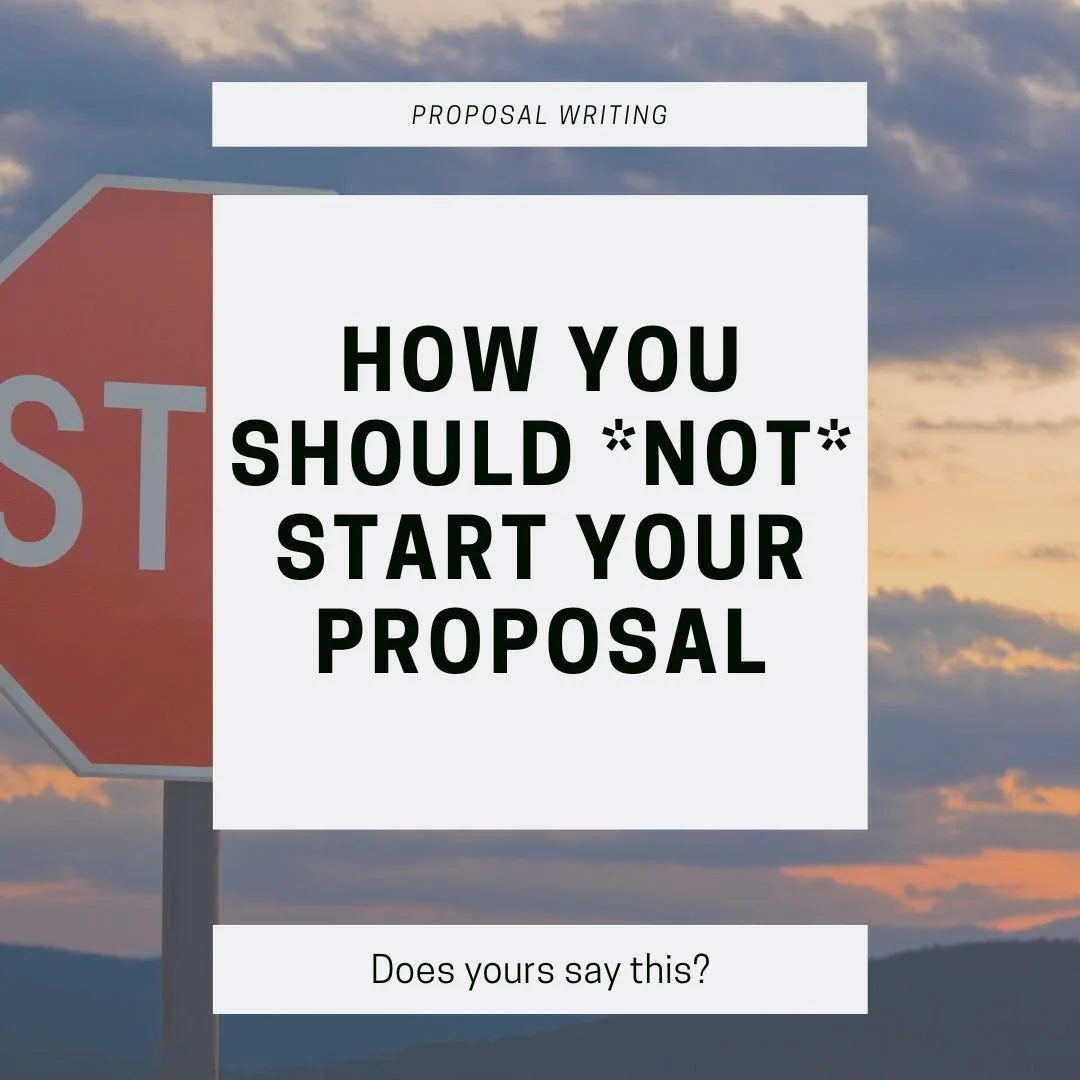How you should NOT start your proposal
When I drafted my first proposal, I had zero business writing experience. I knew very little about what would actually help sell within the proposal, and my general idea was that business writing had to be dry, technical, and to-the-point.
Like most people, to figure out what I should do, I turned to Google for answers. Our proposal template at the time started with a cover letter, and many cover letter examples (and even proposal examples) had similar opening sentences:
We are pleased to present this proposal in response to RFP #....
Thank you for the opportunity to present our solution to…
Thank you for considering our proposal for this opportunity…
You get the picture. Every example had some sort of “fluff” sentence that either thanked the reader or was “pleased to present”.
Certain that this was the “right” way to open a proposal, I crafted a similar opening sentence, drafted the rest of the proposal, and sent it off to my new manager for review.
The response I received was not what I expected.
The opening sentence that I had carefully created after comparing countless examples had a red line through it and a comment “Never open this way. Focus on the customer.”
My cheeks burned when I saw the very first line I wrote ripped to shreds, but I took the advice and rewrote the sentence to be more customer-focused. In fact, all I had to do was delete that first sentence because it was filler text, only there out of a formality, not something that actually connected with the rest of the proposal.
Years later this moment came back to me when I attended an industry training, and I heard the same advice from the presenter.
“Never open with ‘thank you’ in your proposal,” he said. “It sounds like groveling and can come across as desperate. Start with a sentence that presents you as a partner.”
While I had long-since stopped using the filler introduction, this explanation connected a few dots I had been missing before. I started to see proposals as a way to present a partnership, not sell a solution. This meant the opening sentence should sound more like a greeting to a new friend and less like a legal document.
From then on, I focused on using the opening to level the field with the customer and show that we were there to help them achieve their goals, not simply make money.
The opening sentence is one of the most common, easy fixes I see with clients.
Many small businesses don’t have assigned proposal teams, which means that writing the proposal falls to the business owner, salesperson, marketer, or sometimes an assistant.
When you aren’t operating in the proposal world on a full-time basis, it’s easy to turn to Google for answers and see the exact same examples I saw when I crafted that short-lived sentence years ago.
While adding a “thank you” sentence can feel formal and polite, it actually makes the reader less likely to read that entire paragraph.
They open the proposal, encounter this filler sentence, and immediately enter “skim” mode where they search for interesting content instead of reading the text.
That means they’re more likely to skip over your most important content while they skim instead of reading word-for-word.
What to do instead
The advice my boss gave me all those years ago still holds true today: start with the customer.
When you’re writing the beginning of your proposal, whether it’s a cover letter, a technical overview, or a proposal summary, use the first sentence to restate the customer’s problem.
So if you’re creating a proposal for a new website, your first sentence might read: “To maintain your standing as a cutting-edge, modern company, Company XYZ aims to upgrade your website to a platform with more functionality that supports custom design aligned with your brand image.”
As you can see, this is much more engaging than the filler sentence.
Why it works
Opening your proposal this way immediately builds a connection with the reader. You show that you understand their goal, their current challenge, and why they want to make the change. This then perfectly leads into a second sentence either introducing your company or diving deeper into their current challenge (or possible challenges if they go with a competitor), which further establishes your trust and credibility.
Creating that trust and credibility is the key step to getting the customer to sign on the dotted line. Having an opening sentence that does this right away helps your proposal to sell for you instead of becoming a document they skim in search of price.
Next time you create a proposal, try tweaking the opening and see how it changes the overall flow and impact of your proposal.



